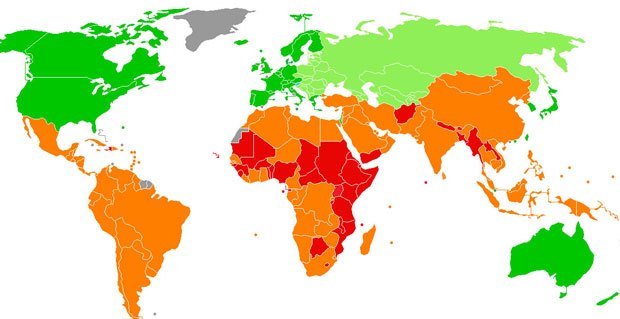LED lights not only have their uses in reducing energy bills and bringing interiors into the 21st century but they could play a far more important role in the developing world with environmental, health and standard of living benefits.
Estimates vary but the International Energy Agency puts the number of people who live without access to electricity at 1.3 billion which means that after dark it becomes increasingly difficult to function in any meaningful way without some other source of light.
Some families keep cooking fires going long after they are needed but this requires a source of wood or other fuel to burn. Kerosene lamps also feature in many a poor, rural home but this too is an expense that families can ill afford. Some people have torches but these eat up batteries and do not provide nearly enough light to work by.
How Can LED light bulbs Help?
Because of their relatively tiny energy requirements, LED light bulbs are ideal for use with solar power cells as the energy stored throughout the day can last many hours after sunset where required.
The benefits of solar powered LED lamps are potentially huge for the individual families but could also, when taken collectively, be momentous for the environment as a whole.
For an individual family, a solar powered LED lamp means less money is spent on Kerosene and other types of fuel which are very expensive in relation to the light they produce. Some estimates put Kerosene costs at 25 – 30 percent of a family’s income which implies that huge savings can be achieved if this is replaced by solar powered LED light bulbs.
Not only can the fuel costs be reduced, but the better quality of light generated by an LED lamp could allow families to generate higher incomes as they will be able to work later into the evening both at home and on any market stalls they may own. It has been estimated that additional disposable income to the tune of 50 percent could be achieved through access to cheaper and better energy and light sources.
Extra disposable income could mean the difference between a child receiving an education or being forced into work. It might also mean better nutrition and access to healthcare for a family who would otherwise go without.
Speaking of health – a reported 2 million people die each year due to indoor air pollution, and while this is mainly from the burning of solid fuels such as wood and coal for food, some will be down to light requirements. LED light bulbs do not have any negative effects on health so lives could be saved through their widespread adoption.
The Environment Wins Too
Kerosene and other crude oil based fuels are so widely used for lighting in the developing world it is thought to equate to roughly 1.3 million barrels of oil a day or 77 billion litres of fuel a year to put it another way.
If used for 4 hours a day throughout the year, just one kerosene lamp has a carbon footprint of around 100kg CO2 so around 190 million tonnes of CO2 emissions are released each year from such lamps worldwide.
Apart from their production, solar powered LED lamps have an effective carbon footprint of zero. This brings obvious carbon savings over fuel based lights but it doesn’t stop there…
Somewhere between 1 and 2 billion people live with grid electricity that is extremely unreliable and that often fails leaving businesses and households in darkness. As these people see the reliability and availability of solar powered lighting in neighbouring towns and villages, there will likely be a proliferation of this technology among on-grid households. It would likely save them money in the long run and give them better access to light at any time.
So, in theory, you could bring effective lighting to half the world’s population that would change those peoples’ lives for the better in so many ways. Light can bring a more productive workforce, a better educated young and a safer environment in which to live. LED light bulbs combined with solar power will play a big role in making this a reality.
Date: September 5, 2012
Tags: environmental led light
LED lights not only have their uses in reducing energy bills and bringing interiors into the 21st century but they could play a far more important role in the developing world with environmental, health and standard of living benefits.




